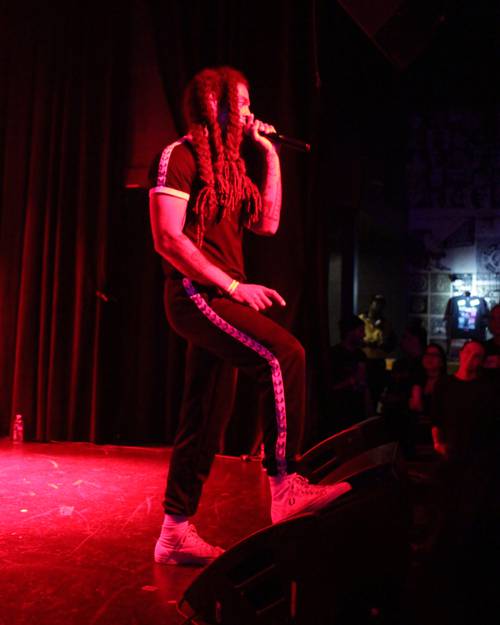
FAQ About The Influence of Grime Music on Cultural Movements

What is grime music and where did it originate?
Grime music is a genre of electronic music that emerged in the early 2000s in London, UK. It blends elements of UK garage, jungle, and hip hop, characterized by fast beats, electronic sounds, and often gritty, urban lyrics. Key figures in its development include artists like Wiley, Dizzee Rascal, and Skepta.

How has grime music influenced cultural trends in the UK?
Grime music has significantly influenced cultural trends in the UK by bringing urban youth culture into the mainstream. Its raw, authentic expression has resonated widely, impacting fashion, language, and social attitudes. The genre has also been a voice for underrepresented communities, reflecting and shaping discussions on issues such as race, class, and identity.

Why is grime considered a significant cultural movement?
Grime is considered a significant cultural movement because it has provided a platform for marginalized voices and challenged the status quo in the music industry. It has fostered a sense of community among artists and fans and has sparked dialogue about important social issues like racism and inequality. Furthermore, it has influenced various aspects of popular culture, including fashion and media.

Which cultural movements has grime music influenced globally?
Globally, grime has influenced various cultural movements by inspiring similar genres and movements in urban centers around the world. From hip hop scenes in the United States to electronic music in Europe and beyond, grime's emphasis on grassroots artistry and authenticity has resonated with audiences, influencing new music genres, fashion trends, and social activism.

Who are some of the key artists in the grime music scene?
Key artists in the grime music scene include Wiley, often referred to as the "Godfather of Grime," Dizzee Rascal, Skepta, Jme, Stormzy, and Kano. These artists have been instrumental in shaping the sound and influence of grime music both in the UK and internationally.

How has grime music impacted societal perspectives?
Grime music has impacted societal perspectives by challenging stereotypes and providing a platform for expression for young people, particularly from working-class and minority backgrounds. It has opened up conversations about social issues such as inequality, racism, and youth disenfranchisement, thus contributing to a broader understanding and acceptance of diverse voices in society.

What role has grime music played in UK politics?
Grime music has played an increasing role in UK politics, particularly during the 2017 general election. Many artists, such as Stormzy, publicly supported the Labour Party and its leader, Jeremy Corbyn, encouraging young people to vote and engage with political issues. This movement, dubbed 'Grime4Corbyn,' highlighted the genre's influence on political engagement among young people.

How does grime music reflect issues of race and identity?
Grime music reflects issues of race and identity by providing a voice for marginalized communities and expressing the realities of living as a person of color in urban UK environments. Through its lyrics and culture, grime addresses themes of racial pride, social justice, and community empowerment, highlighting both struggles and the resilience of these communities.

In what ways has grime influenced fashion trends?
Grime has influenced fashion trends through its distinct style characterized by sportswear from brands like Nike and Adidas, hoodies, puffer jackets, and bold streetwear aesthetics. This has penetrated mainstream fashion, influencing both high street and designer labels. Grime's impact on fashion represents a cultural shift towards street-inspired, casual clothing.

Is grime music popular outside of the UK?
Yes, grime music is popular outside of the UK, especially in Europe and parts of North America. Its unique sound and powerful lyrical content have attracted an international fanbase. Artists like Skepta and Stormzy have played crucial roles in popularizing grime worldwide through tours, collaborations, and social media.

What is the difference between grime and hip hop?
While grime and hip hop share similarities as urban music genres, they differ in origins, sound, and culture. Grime originated in London and is characterized by its fast tempos and electronic beats, often around 140 BPM, while hip hop originated in the United States largely associated with slower beats and a wider variety of styles. The themes and accent in grime often reflect UK street culture, contrasting with the American influences in hip hop.

How has technology influenced the evolution of grime music?
Technology has greatly influenced the evolution of grime music by enabling widespread dissemination and diversification. The accessibility of music production software has allowed more artists to create grime tracks independently, while platforms like YouTube and SoundCloud have facilitated the global distribution of music. These technologies have helped grime grow from a local London sound to an internationally recognized genre.

What impact did pirate radio stations have on the growth of grime music?
Pirate radio stations played a crucial role in the growth of grime music by providing an essential platform for emerging artists to showcase their work. Stations like Rinse FM gave grime artists a space to broadcast their music, helping to cultivate a dedicated listener base and community. This underground exposure was integral to the genre's development and popularity.

How have grime artists used their platform to address social issues?
Grime artists have used their platform to address social issues by tackling themes like poverty, racism, and police brutality in their lyrics. Many artists actively participate in social commentary and community activism, raising awareness and voicing the struggles of marginalized communities. This advocacy has earned grime recognition as a genre with social and political consciousness.

Has grime music faced any challenges or controversies?
Grime music has faced several challenges and controversies, including media stereotyping and police scrutiny, which have sometimes branded it as a genre associated with violence and gang culture. Additionally, some artists have confronted barriers in gaining mainstream acceptance and airplay due to its raw style and themes. Despite these challenges, grime has managed to thrive and influence broader cultural movements.

How has the streaming era affected grime music?
The streaming era has positively affected grime music by expanding its reach and accessibility. Platforms like Spotify, Apple Music, and YouTube allow artists to distribute their music globally without the need for traditional label support. This democratization of music distribution has enabled grime artists to build substantial followings and engage with fans directly worldwide.

What are the distinctive features of grime music that contribute to its appeal?
Distinctive features of grime music that contribute to its appeal include its energetic beats, often featuring rapid tempos of around 140 BPM, and its lyrical content which addresses authentic urban life experiences. Grime's raw and unpolished production style, combined with its emphasis on individuality and directness, resonates with audiences seeking music with genuine grit and energy.

How did grime music transition from underground to mainstream?
Grime transitioned from underground to mainstream through a combination of factors, including the support of influential radio stations, significant web-based platforms, and the rising success of pioneering artists. Collaborations with mainstream artists and labels also helped grime reach a broader audience. Furthermore, festivals and award ceremonies began recognizing grime artists, enhancing the genre's mainstream visibility.

What are some misconceptions about grime music?
Common misconceptions about grime music include viewing it solely as violent or negative due to its sometimes gritty lyrical themes. However, grime is a reflection of real-life stories and experiences, offering a platform for creative expression and social commentary. Another misconception is conflating grime with other genres like drill or hip hop, ignoring its unique sound and cultural significance.

How does grime music continue to evolve?
Grime music continues to evolve by incorporating new influences and technologies. Artists are experimenting with hybrid genres, blending grime with elements of pop, dancehall, and electronic music. The genre's international collaborations have also introduced diverse sounds and ideas, keeping grime dynamic and relevant in the global music scene.
